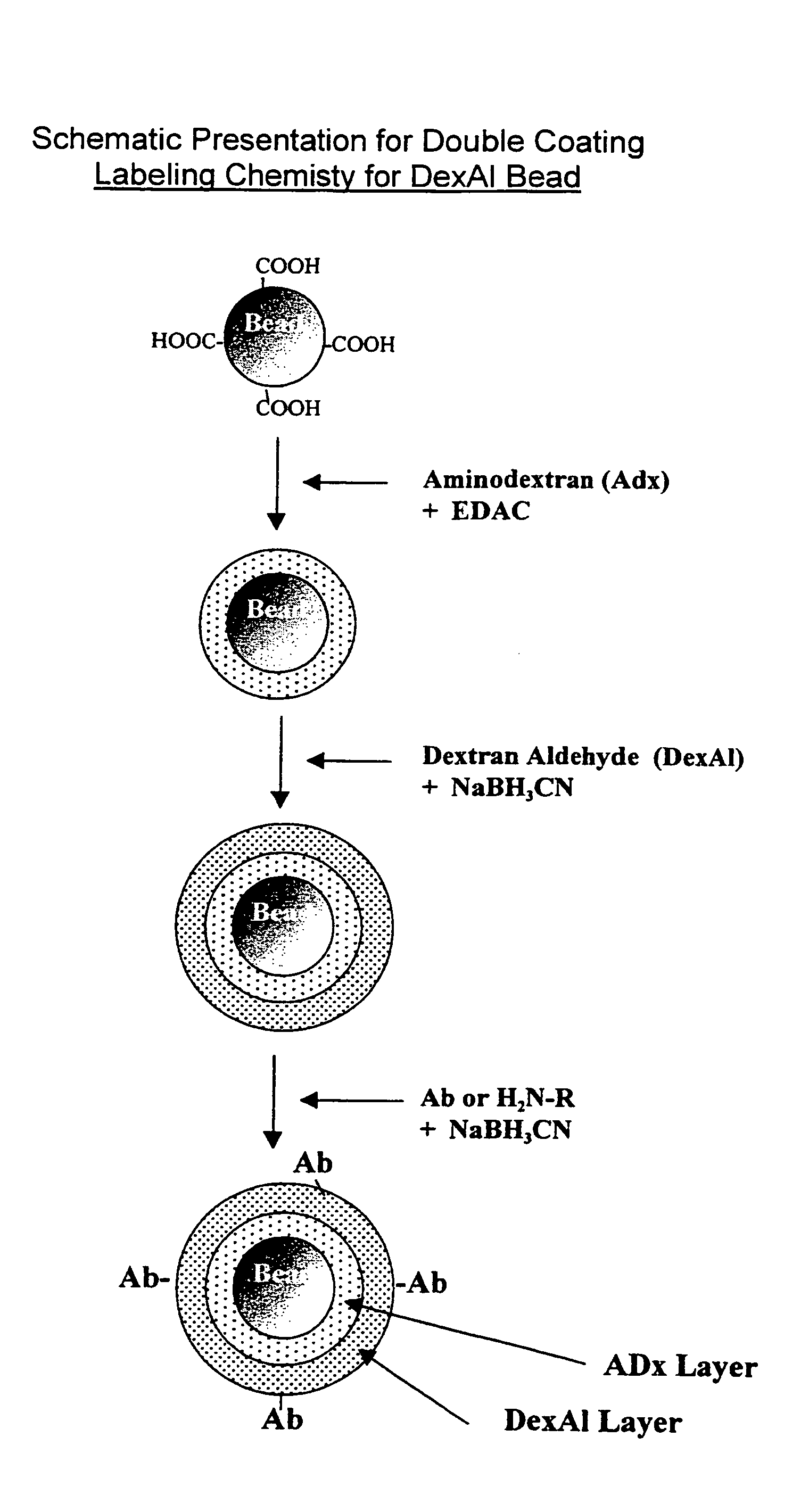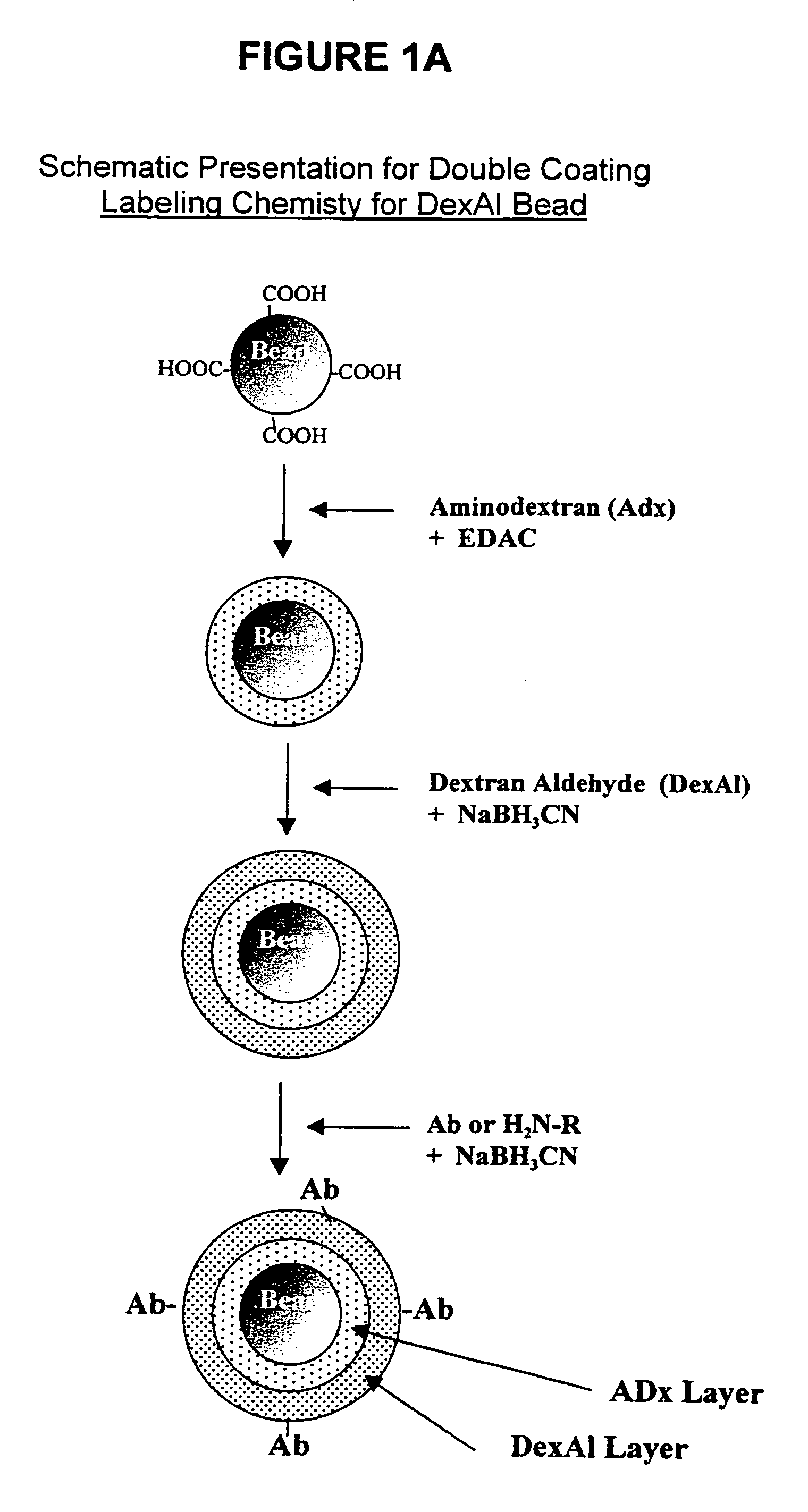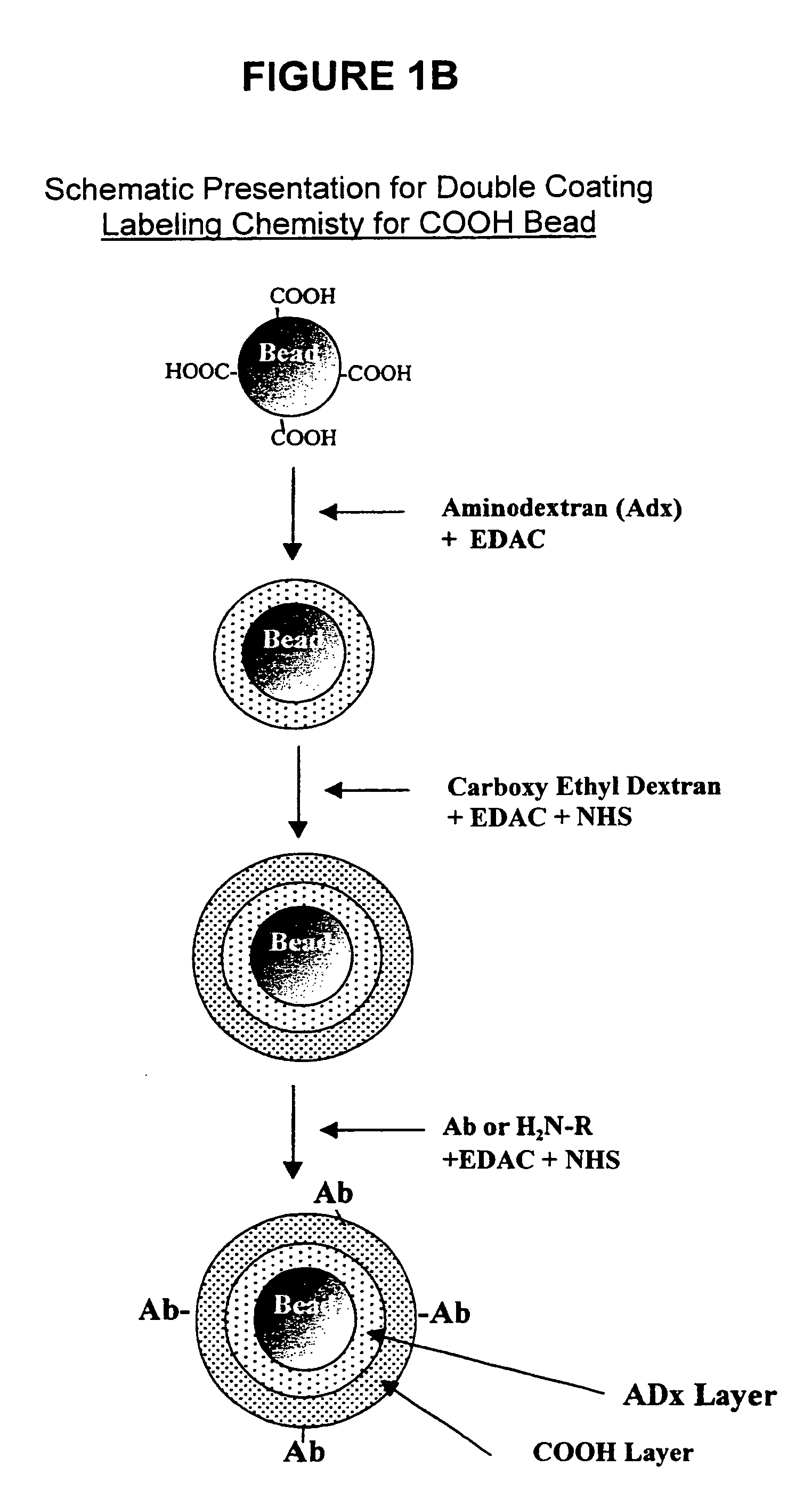Carriers coated with polysaccharides, their preparation and use
a polysaccharide and carrier technology, applied in the field of carriers, can solve the problems of unacceptably low number of specific binding partners associated with carriers, poor performance of specific binding assays, high background and low sensitivity, etc., and achieve rapid and effective coverage, minimize unspecific binding, and improve the effect of carrier surface coverag
- Summary
- Abstract
- Description
- Claims
- Application Information
AI Technical Summary
Benefits of technology
Problems solved by technology
Method used
Image
Examples
examples
[0122]
Abbreviation UsedAbAntibodyAccAcceptor bead in a LOCI ™ AssayAmDex (AmDx)AminodextranBiotin-X-NHSsulfosuccinimidyl-6-(biotinamido)-hexanoateBSAbovine serum albumineB-IgGbovine immunglobuline GCEDexCarboxylethyldextranCHOAldehyde groupC-beadChemiluminescent beadDCdouble coated b adsDexAlDextran AldehydeDigDigoxinDMSOdimethyl sulfoxideEDO or EDAC1-Ethyl-3-(Dimethylpropyl)carbodiimidEDTAethylenediamine tetraacetic acidMES2-(N-Morpholino)ethansulfon acidNaClsodium chlorideNHSN-HydroxysuccinimidePBSphosphate buffered saline 0.02 M NaPi, 0.14 MNaCl / pH 7.2PiphosphatePSAprostate specific antigenS (S-Bead)sensitizer bead for a LOCI ™ AssaySCsingle coatedSens-Sav BeadsStreptavidin coated sensitizer beadsTAR-Beads(Thioxene, Anthracene, Rubrene)-BeadsTRIS-HCLtris-(hydroxymethyl)-aminomethane-hydrochloric acid
[0123]The following examples are given to illustrate the utility of the claimed invention and are not to be taken as limiting the invention. In particular, the preparation of reagents...
PUM
| Property | Measurement | Unit |
|---|---|---|
| size | aaaaa | aaaaa |
| molecular weight | aaaaa | aaaaa |
| size | aaaaa | aaaaa |
Abstract
Description
Claims
Application Information
 Login to View More
Login to View More - R&D
- Intellectual Property
- Life Sciences
- Materials
- Tech Scout
- Unparalleled Data Quality
- Higher Quality Content
- 60% Fewer Hallucinations
Browse by: Latest US Patents, China's latest patents, Technical Efficacy Thesaurus, Application Domain, Technology Topic, Popular Technical Reports.
© 2025 PatSnap. All rights reserved.Legal|Privacy policy|Modern Slavery Act Transparency Statement|Sitemap|About US| Contact US: help@patsnap.com



